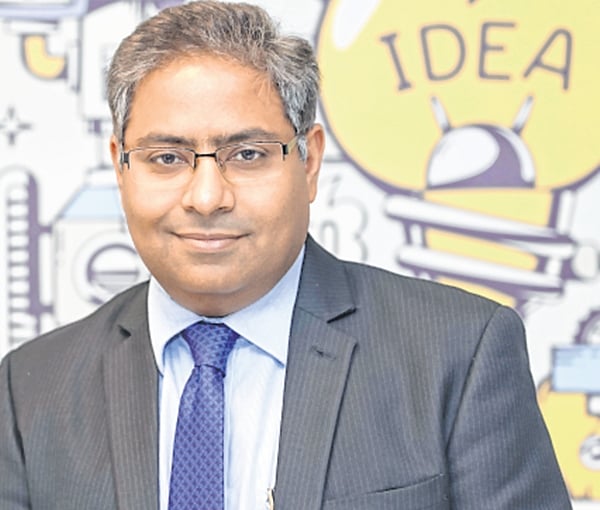Over the last two years, Aegon Life Insurance Company has revamped its strategy. From depending on a mix of traditional and digital channel (like other players), it has now moved to become a new-age digital service company.
This has worked in favour of the company, says Vineet Arora, MD and CEO of Aegon Life Insurance Company. Prior to taking over the corner office, Arora worked with many organisations in business and finance sector for over 16 years.
Speaking to Free Press Journal’s Jescilia Karayamparambil and R N Bhaskar, Arora highlights the dynamics of insurance.
Where have you improved and succeeded? During the last 10 years, we have pioneered the online term plan (iTerm plan). Before turning our complete focus to digital, we did have some presence in traditional business too. In 2008, we had a partnership with Religare and we were doing a lot of traditional business then.
But we also noticed that while the company started to see lot of success around the online term plan, the Religare-driven traditional model faced a lot of ups and downs. But as Religare moved out in 2014, we found it difficult to run those traditional channels. In 2016, the call was taken to focus only on digital which was the strength of the company.
Our entire strategy was therefore built around it. In India, we kept digital in the forefront and protection as the focus product. Our plan is to create an environment where the young working group (30-35 years) who are educated see value in a good term plan.
This group prefers to research and choose the right plan on its own. Our strategy is different compared to other insurers. While 60 per cent of new customers are looking at term plan, only 30-40 per cent of our customers are looking for other plans. In other companies, this share of term plan can be lower. From digital, we get 25-30 per cent of our business (in value) and 50 per cent of our customers (in numbers).
What makes you’ll different from others? Apple-to-apple comparison is not possible, when we compare ourselves with other players. With our kind of distribution model that is digital, and has few branches and partners, we would be the seventh-eighth largest company in terms of sum assured on our books.
This tell us, why we are different from others. If you look at the premium side, we look like a small company but if you look at the sum assured we are among the top 10 companies.
If your premiums are small and your sum assured are large, is it because you are charging low premiums?
It is because we get a lot of business from the products called ‘protection plan’ which do not have much of an investment component attached to it.
The premiums become large if there is an investment component attached to it. We also have investment-based plans but only a small portion of our business comes from that category. We want to become ‘protection specialist’. We want to offer value and convenience to our customers.
Where do you’ll stand in terms of exits or surrenders? This is something that we are not proud about. After the adoption of the digital strategy, in last two years we have improved on our persistency ratio. About two years ago, our persistency ratio was 55 per cent but, today, we are touching 80 per cent.
Our persistency ratio in terms of value and numbers is around 80 per cent. In case of term plan, our persistency ratio is 90-95 per cent and we has seen good persistency right from the start. Additionally, we have done some structural changes too and this helped us improve further.
By when do you plan to break even? I cannot answer that as it is a forward looking statement. The focus on growing the books and customers satisfaction is clearly there. Our business model, which is about two years old, is supposed to take a growth path.
While you focus on digital, there will be more players that will be embracing digital. How do you see competition?
Competition is always welcome. India’s population is around 133 crore and the penetration of insurance is about 2-2.5 per cent of population. From this, the coverage of term plan is also low. With more and more young people joining the working group, they will look at starting investments with term plans.
This will create more awareness among the populace. This young generation is internet savvy and it learns about various term plans through its own research. Simple tools like web aggregators and others, help this group to compare and make wise decision.
This has helped the industry to move to a different level. The level of awareness will increase with more and more players exploring this model. Insurance industry is tapping only 2 per cent of India, and 98 per cent is still left. That large figure represents the untapped potential. There is no fear about competition as the pie is so large and more players are welcome.
Where do you see growth coming from—urban or rural areas? The growth is skewed in favour of the top 20 cities because of internet penetration. But that does not mean we are not getting customers from small towns. Last year, we sold policies to people in 330 towns.
It is a good reach. It is not that we have branches there. Our branches are only present in the top 30 locations of the country, yet we are able to reach these towns.
How do you use data to to know about customer behaviour? We look at credit scores among other things to understand our customers. But we do not get into social media and user profiles.
We are also working with other partners from where we get our customers and at times, we get this data from our partners. Sometimes, these partners have longstanding relations with these customers (who can then become Aegon’s potential customers). So, we try to use that data while dealing with our new customers as it is convenient for the insured.
How significantly do you use artificial intelligence (AI)? We use AI but we do not use it in underwriting. There are some algorithms that are static. But we use a lot of AI in our lead generation. In the next couple of years, we will have enough data to run it on underwriting.
What are the directions that you plan to take? We firmly believe that there is so much of opportunity in India to expand in the protection category. There is only a fraction of the population in India that is investing in this section. The reason this has not grown has lot to do with the lack of awareness and inaccessibility.
At times, term plans are not sold as much it should be because term plan is cheaper. Intermediaries do not pitch term plans because this does not suit their business model.
So, we believe that market is available and that needs to be captured. We also believe that small-ticket insurance plans can encourage people to enter into insurance. The idea is to bring simple solutions and small-ticket plan is one such option. First-time insured can start from small-ticket plan and when they are confident they can opt for higher sums in insurance policies.
Do you have a set age group or target age group? In our current portfolio, we have a large number of customers who are in the age group of 30- 35 years. This is the group that is digitally more savvy and believes in finding the right product. Through new channels and partners, we can reach out to a younger populace too.
Would we see you partner with banks? We are focusing right now on the digital (online) model and not focusing on any offline model. Today, digital is going very very deep and internet speed is improving too. There are many insurers that follow a physical strategy but we have chosen the digital strategy.
In terms of advertising, you spend more on online or offline mediums?
We do little bit branding offline as well. But major spends is online (around 60 per cent). How many online partners/channels do you’ll have? n We have around 10 offline partners, but we have around 20 online partners.
It is found that AMCs have some exposure to some badly performing companies. Have you made such unwise investments? We do not have any such exposure. But I think for that a lot of credit goes to IRDAI as it has strict investment guidelines. It has certain guidelines that need to be met. There is only some discretion at the fund management level. However, we have been able to stay out of such investments as we have a clear investment policy.
Mutual Funds (MF) disclose their portfolio but insurance companies do not. Do you think this should be followed in case of insurance too? Any kind of transparency is welcome. I am firm believer in transparency and I think it will bring good practices for the industry.
Are you looking at targetting any region or towns specifically? That will be a very traditional approach, which we do not intend to follow. We think our reach is the entire country and internet has broken boundaries.
At what rate are you growing at? On sum assured, we grew about 10-11 per cent. In terms of premium, it was lower than last year. It was a strategic call. We decided to reduce certain channels which were not giving us quality business. While premiums dropped, this decision has helped us improve in other areas.









